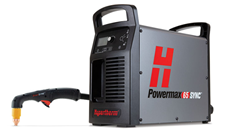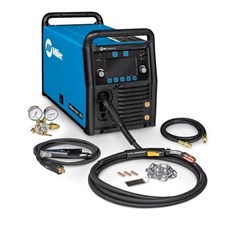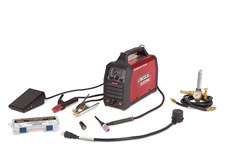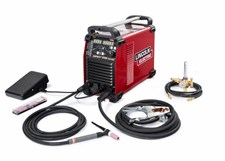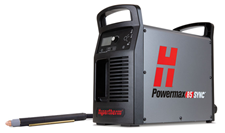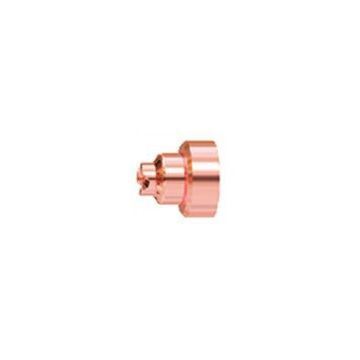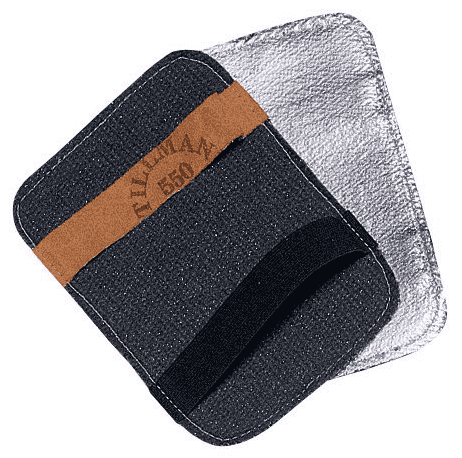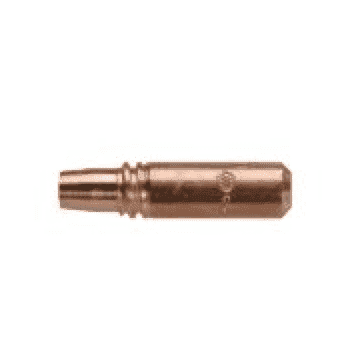294 220V Single Phase Welders & Plasma Cutters Starting at $9.64
220V single phase welding and plasma cutting machines plug into 3 or 4 prong outlets. These are the same kind of outlets used for washers and dryers, and carry twice the voltage of your typical 110V 2 prong outlet.
Shop 220V single phase electric welders from popular brands like Miller, Victor, Blue Demon, and Hobart.
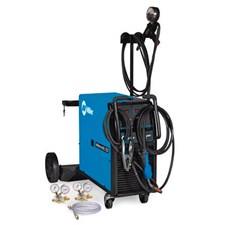

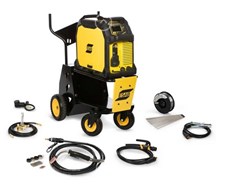
 Miller Welders
Millermatic® 255 MIG/Pulsed MIG Welder #907734
Miller Welders
Millermatic® 255 MIG/Pulsed MIG Welder #907734
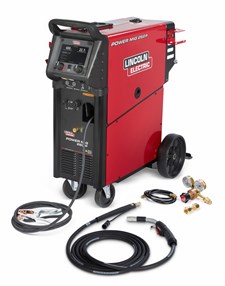 Lincoln Welding Machines
POWER MIG® 262P Pulsed MIG Welder (208-575V 1PH) #K5378-1
4 purchased
Lincoln Welding Machines
POWER MIG® 262P Pulsed MIG Welder (208-575V 1PH) #K5378-1
4 purchased

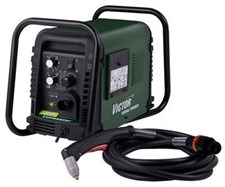 Thermal Dynamics
Thermal Dynamics Cutmaster 82 Plasma Cutter w/ 20' 75° Hand Torch (220/460V 1/3PH) #1-1130-1
41 purchased
Thermal Dynamics
Thermal Dynamics Cutmaster 82 Plasma Cutter w/ 20' 75° Hand Torch (220/460V 1/3PH) #1-1130-1
41 purchased
 Miller Electric
Maxstar 161 STH, X-Case, Pulsed TIG/Stick Fingertip Ctrl Pkg #907711001
Miller Electric
Maxstar 161 STH, X-Case, Pulsed TIG/Stick Fingertip Ctrl Pkg #907711001
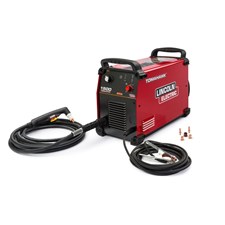

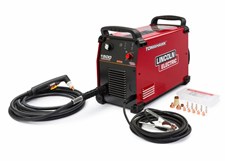
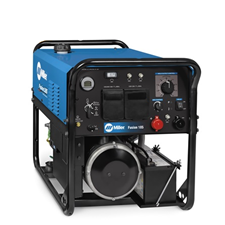
220V Single Phase Power Supply
Before getting into 220v power, let’s address single-phase power. Single-phase (AKA “1-phase”) power is what you have running into your home. It is a two-wire AC circuit—one power wire (the phase wire) and one neutral wire. Electrical current flows between the power wire and neutral wire. Whereas, 3-phase power is a three-wire AC power circuit, with each phase 120-degrees apart. The main benefit of 3-phase power is providing power at a constant rate, without the peaks and dips inherent in 1-phase power.
Most homes have standard AC outlets rated at 110v. In simple terms, a 220v outlet has 2 wires combined to produce twice the amount of voltage from a 110v outlet. For large appliances (and 220v welding machines) in need of more power, a 220v outlet is necessary. Your washer and dryer, for instance, are plugged into 220v outlets. The plugs for these appliances are large, 3-or 4-pronged plugs in a dark-colored, circular housing, and the outlet they plug into is similarly round and dark-colored.
As you would expect, a 220v welder will have more power than a 110v welder. The extra 110v enables a 220v welder to weld thicker metals than a 110v welder. If you anticipate the need to weld metal thicker than 1/8” steel (the maximum weld capacity of most 110v welders), you will be better off with a 220v machine. It is important in you choose your power supply by power source.
Voltage rating confusion over the numbers used
It’s not uncommon to see 220-volt welders described as 230, 240 or 250 volts. Actually, they are all the same. The differing numbers are used to account for periodic variations in the power supply. When electricity runs through the wiring in a house, the voltage fluctuates. Sometimes it’s higher than 220v, sometimes it’s lower. In a similar manner, 110-volt appliances are sometimes described as 115, 120 or 125 volts.
What does a 220V outlet look like?
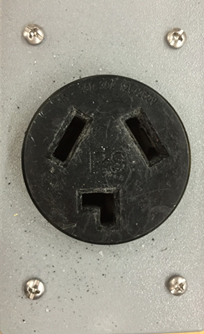
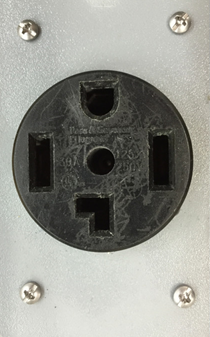
Why aren’t all household outlets 220v?
Two reasons: cost and safety. Copper wire is expensive, and 110v outlets require less of it. In a 110v circuit, the wire is typically 12 gauge, while a 220v circuit requires 10 gauge or larger. Besides, most appliances in a house don’t need 220v—just large ones like the dryer and oven.
Safety is also a factor. An accidental shock from a 220v outlet is twice as painful as one from a 110v outlet (and can even be fatal). For these reasons, most homes are built with 220v outlets only where they’re really needed - in the laundry room and kitchen.
The ideal solution for home use: Get a 220v outlet installed in the garage
Having an electrician install a 220v outlet in your garage will allow you to safely use your welder in the garage or just outside of it. The cost for this varies, depending on the distance between the outlet and your electrical box, and whether your electrical supply is adequate for another 50Amp breaker (most 220v welders are 50amp). The copper wire runs about $6 per foot, so a long run from the outlet to the electrical box can add up fast. Also, the longer the distance, the longer it will take the electrician to run the wire and the more likely there will be obstacles to deal with.
Do you need to upgrade your electrical service to add a 220v outlet?
If your home has 50Amp or 100Amp service, you’ll most likely have to upgrade it to 150 or 200 Amps. You’ll need an electrician for this, and it can run anywhere from $800 to $3,000, depending on electricians’ rates in your area. However, if you need to upgrade the electrical wiring (a likely scenario in any house over 40 years old), the job involves opening up walls to access the wiring and then repairing the walls. For an average-sized house, this can cost up to $8,000. For a large home with difficult to reach areas, the cost can balloon to $20,000 or more.
It’s worth rethinking the need for a 220v welder then and start taking a look at 110v welders or buying a generator to power the 220v welder. If the expense and hassle of adding a 220v outlet is too great, a generator (or a combination generator/welder) is a good alternative.












